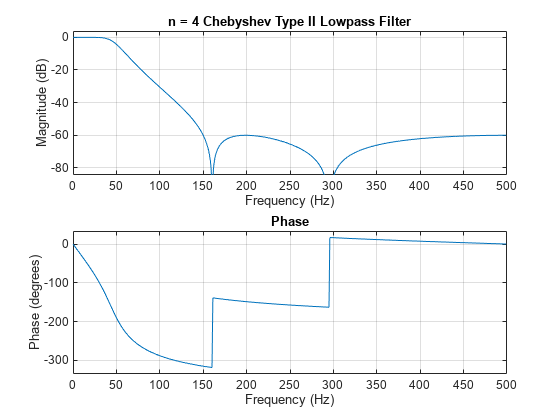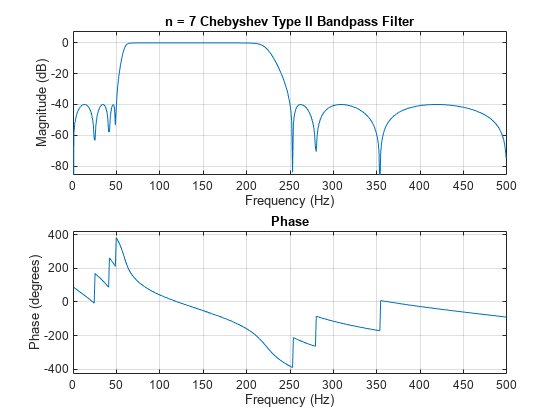cheb2ord
Chebyshev Type II filter order
Description
Examples
Input Arguments
Output Arguments
Algorithms
cheb2ord uses the Chebyshev lowpass filter order prediction formula
described in [1]. The function performs
its calculations in the analog domain for both analog and digital cases. For the digital case,
it converts the frequency parameters to the s-domain before the order and
natural frequency estimation process, and then converts them back to the
z-domain.
cheb2ord initially develops a lowpass filter prototype by
transforming the stopband frequencies of the desired filter to 1 rad/s (for low- and highpass
filters) and to -1 and 1 rad/s (for bandpass and bandstop filters). It then computes the
minimum order and natural frequency required for a lowpass filter to match the stopband
specification exactly when using the values in the cheby2
function.
References
[1] Rabiner, Lawrence R., and Bernard Gold. Theory and Application of Digital Signal Processing. Englewood Cliffs, NJ: Prentice-Hall, 1975.
Extended Capabilities
Version History
Introduced before R2006a

